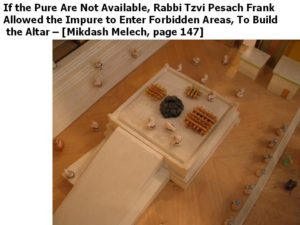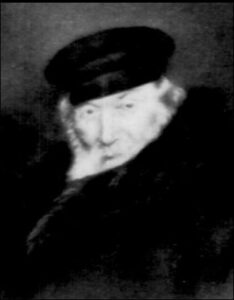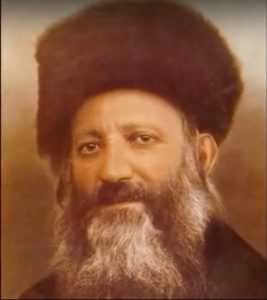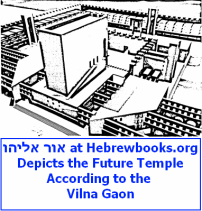 Full details of the story about how a group tried to smuggle a goat into the Temple Mount can be found at this link https://www.theyeshivaworld.com/news/israel-news/2397765/nine-arrested-attempting-to-bring-korban-pesach-on-har-habayis-for-pesach-sheini-video.html
Full details of the story about how a group tried to smuggle a goat into the Temple Mount can be found at this link https://www.theyeshivaworld.com/news/israel-news/2397765/nine-arrested-attempting-to-bring-korban-pesach-on-har-habayis-for-pesach-sheini-video.html
A Video of the Event
Background
In the Biblical book of Bamidbar (Numbers) Chapter 9 we learn the following (Koren Jerusalem Bible translation at Sefaria.org):
And the Lord spoke to Moshe in the wilderness of Sinay, in the first month of the second year after they were come out of the land of Miżrayim, saying,
Let the children of Yisra᾽el also keep the passover at its appointed season.In the fourteenth day of this month, at evening, you shall keep it in its appointed season: according to all the rites of it, and according to all the ceremonies of it, shall you keep it.And Moshe spoke to the children of Yisra᾽el, that they should keep the passover.And they kept the passover on the fourteenth day of the first month at evening in the wilderness of Sinay: according to all that the Lord commanded Moshe, so did the children of Yisra᾽el.And there were certain men, who were defiled by the dead body of a man, that could not keep the passover on that day: and they came before Moshe and before Aharon on that day:and those men said to him, We are defiled by the dead body of a man: why are we kept back, that we may not offer an offering of the Lord in its appointed season among the children of Yisra᾽el?And Moshe said to them, Stand still, and I will hear what the Lord will command concerning you.And the Lord spoke to Moshe saying,Speak to the children of Yisra᾽el, saying, If any man of you or of your posterity shall be unclean by reason of a dead body, or be on a journey afar off, yet he shall keep the passover to the Lord.On the fourteenth day of the second month at evening they shall keep it, and eat it with unleavened bread and bitter herbs.They shall leave none of it to the morning, nor break any bone of it: according to all the ordinances of the passover they shall keep it.But the man that is clean, and is not on a journey, and fails to keep the passover, then that person shall be cut off from among his people: because he brought not the offering of the Lord in its appointed season; that man shall bear his sin.
And if a stranger shall sojourn among you, and will keep the passover to the Lord; according to the ordinance of the passover, and according to its prescribed manner, so shall he do: you shall have one ordinance, both for the stranger, and for him that was born in the land.

The Chafetz Chaim in Likutei Halachot, Pesachim, Chapter 7, (on page 80 of the Masechet) Torat Hakodshim, points 30 & 40 implies that only if the Passover sacrifice was observed under the proper conditions in the Hebrew month of Nissan, would the minority have the opportunity (under the proper conditions) to observe the second Passover on the 14th of the second Hebrew month, Iyar.
If you go by his ruling, we could not bring the second Passover sacrifice on the 14th of Iyar.

It is brought in the book “Hamikdash Oro Shel Olam” (The Temple is the light of the world) that Rabbi Kook tried to convince the British to allow the renewal of the sacrificial service on the Temple Mount.
The author S. Y. Agnon: Maran Rabbi Kook planned the renewal of the bringing the sacrifices
In the discussion on ‘Prayer in Israel’, which took place at Bar Ilan University, Prof. Dov Sadan (recipient of the Israel Literature Prize 5728 / 1968) described his conversation with the writer S. Y. Agnon regarding the renewal of the sacrificial work and the opinion of Maran Rabbi Kook zt”l on this matter. These are his words[2]
“We must not forget the impact of the assumption of the renewal of sacrifices upon the thinking of the Chibat Zion movement (such as Rabbi Tzvi Hirsch Kalisher and Rabbi Eliyahu Guttmacher). And the position of Rabbi Avraham Yitzchak HaCohen Kook, peace be upon him, will prove that not only did he dream all his days about renewing the sacrifices, and he prepared himself for it, but he sought to make it into reality. And I heard from S.Y. Agnon, that two persons hindered him, the one who did not understand the urgency of the matter – is Chaim Weizmann, and the one who understood the urgency of the matter is Ronald Storrs [the British governor of Jerusalem] and the rabbi felt that this was the point of decisive tragedy in his life” (Rabbi Ari Yitzchak Shevat in his article: ‘The sacrifices of the future in the Third Temple according to Rabbi Kook’).
Prof. Weizmann was one of the leaders of the Zionist Organization and had a decisive influence on the organization and the budgets, but he was distant from the Torah and mitzvot, and therefore treated Rabbi Kook zt”l’s initiative in this matter coldly. On the other side stood Ronald Storrs, the British governor of Jerusalem who sided with the Arabs in the conflict with the Jews. Ronald Storrs was accused of having supported behind the scenes the Arab riots against the Jews in the Jewish year 5680, and remained inactive when faced with the murder of Jews in the settlements of the country. Due to his attitude towards the Jews, Rabbi Kook refused to shake his hand in one case, since, as the governor of Jerusalem, he did many things to favor the Arabs for control of the city and the Temple Mount.
Talks with the authorities regarding the possibility of resuming work at the Temple
Despite the above, it is clear from the testimony of S.Y. Agnon that there was a discussion on this matter with both Prof. Weizmann and Ronald Storrs. This is also evident from the obituaries that were given for Maran Rabbi Kook zt”l on the day of his death, the speakers and writers mentioned among their words his plan to begin the sacrificial service. It turns out that this fact was known not only to S.Y. Agnon but also to journalists. This is how it appears in the newspaper ‘Davar’ (4 Elul 5695) – the newspaper of the workers of Eretz Yisrael, where it was written the day after the death and before Rabbi Kook was buried on the Mount of Olives:
“On his return from London to the Land of Israel after the Balfour Declaration… Rabbi Kook thought of renewing the sacrifices on the Temple Mount, and founded a special yeshiva called ‘Torat Kohanim’, to learn the laws of sacrifices. It is said that General Storrs stressed the politics and the risk about this suggestion and Rabbi Kook ceased to press for the idea”.
In other words, the fact that the talks were held in this matter was a well-known fact, but the special circumstances of the time, such as the tension between Jews and Arabs, as well as the existence of a hostile government in Israel, led Maran, Rabbi Avraham Y. Kook zt”l to the decision to wait for another opportunity. Thus, the idea of renewing the commandments connected to the Temple were pushed away to the period when the people of Israel would rule the Temple Mount, (here ends the excerpt from, “Hamikdash Oro Shel Olam”.
The Justification Offered by the Chozrim LaHar (Return to the Mount) Movement for the Activists Described Above (Translation from their Facebook Page)
The Struggle Over the Passover Sacrifice Escalates
For the first time in two thousand years: A live young goat was brought into the Temple Mount — with the intention of offering it as a Second Passover sacrifice.
Several activists were arrested after being violently attacked by police, Waqf guards, and Arab rioters.
The “Return to the Mount” movement stated:
“The only way to defeat Hamas, free all the hostages, and eradicate terrorism is through a brave return to the Temple Mount. No more dealing with peripheral matters — but full sovereignty, the renewal of sacrificial worship, and the rebuilding of the Temple. Only this way will we prevail.”

